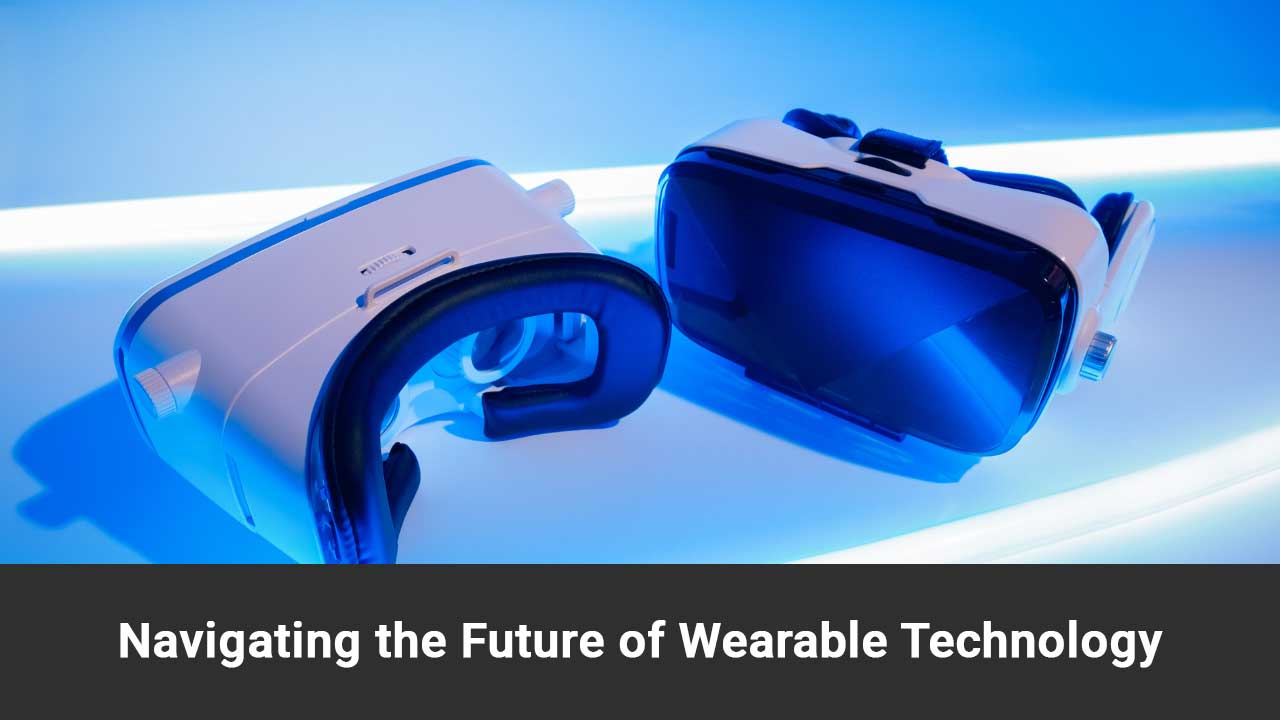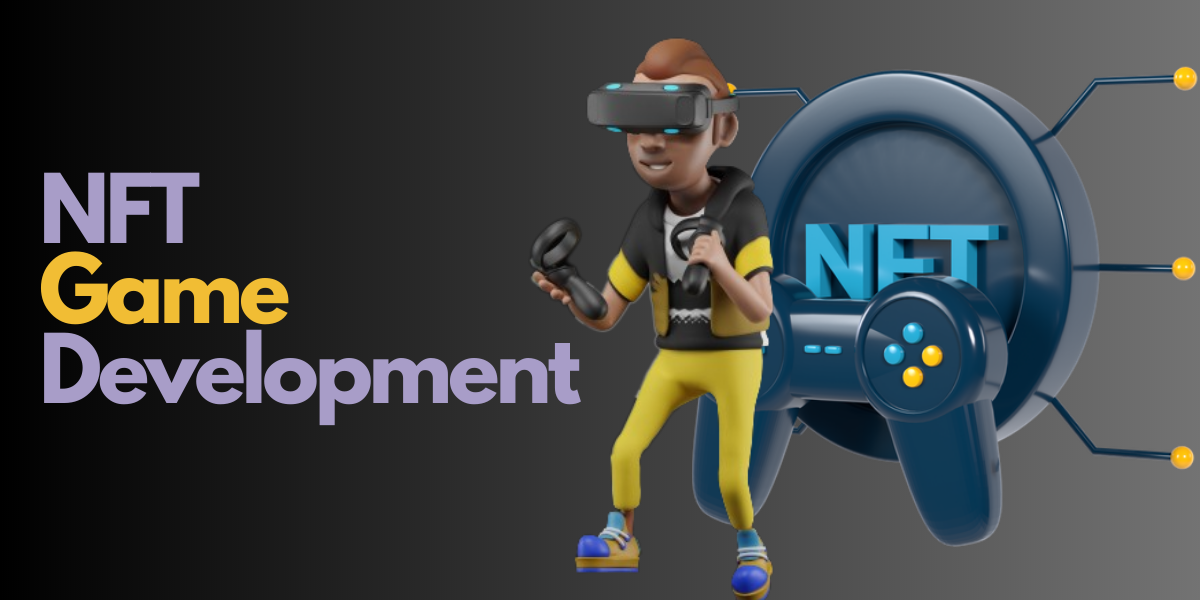Navigating the Future of Wearable Technology
Wearable technology has fundamentally altered the way in which we interact with our environments, thereby revolutionizing the constantly evolving technological landscape. The integration of wearable technology into our daily lives has evolved augmented reality glasses and health-monitoring smartwatches from specialized products to indispensable tools often developed. These gadgets are becoming integral to our daily lives as they monitor our health and project digital data over our physical environment. This article thoroughly analyzes the future of Wearable technology, exploring its impact on several aspects of our future societies.
The Evolution of Wearable Technology
The origins of wearable tech may be traced back to the initial stages of fitness monitoring gadgets and rudimentary smartwatches. Initially, these early devices had a restricted range of features, featuring basic applications that mostly emphasized health and fitness monitoring. Nevertheless, with the progression of technology, wearable devices and their accompanying apps have also evolved in terms of their capabilities.
The development of dynamic wearable apps has been crucial in fully harnessing the capabilities of wearable devices. These apps harness the possibilities of wearable devices to create personalized experiences suited to individual users’ requirements and tastes. Dynamic wearable apps can offer consumers real-time insights and actionable information by utilizing sensors, data analytics, and machine learning algorithms.
The Impact of Wearable Technology on Daily Life
The integration of wearable technology into our daily lives has been profound. From helping individuals track their fitness goals to enhancing productivity in the workplace, wearables have become indispensable tools for many. For example, smartwatches not only tell time but also allow users to receive notifications, make payments, and even monitor their health in real-time. Similarly, augmented reality glasses have the potential to revolutionize industries such as healthcare, education, and manufacturing by providing hands-free access to information and immersive experiences.
The Role of Artificial Intelligence in Wearable Technology
Artificial intelligence (AI) is poised to play a central role in the future of wearable technology. By harnessing the power of machine learning algorithms, wearables can analyze vast amounts of data in real-time, providing users with personalized insights and recommendations. For example, AI-powered wearables can track patterns in user behavior and adapt their functionality accordingly, ultimately enhancing the user experience and improving outcomes.
The Potential of Augmented Reality Wearables
Augmented reality (AR) wearables represent another exciting frontier in wearable technology. These devices overlay digital information onto the user’s physical environment, creating immersive and interactive experiences. From gaming and entertainment to education and healthcare, AR wearables have the potential to transform how we interact with the world around us. Imagine being able to visualize complex data in 3D or receive step-by-step instructions overlaid onto your surroundings – the possibilities are endless.
Navigating the Future of Wearable Technology
As we navigate the future of wearable technology, it’s essential to consider not only the technological advancements but also the ethical, privacy, and security implications. With devices collecting increasing amounts of personal data, questions around data privacy and security become paramount. It’s crucial for manufacturers and developers to prioritize user privacy and implement robust security measures to protect sensitive information.
Improving Connectivity and Communication
Do you often find yourself monitoring your phone for messages and notifications? Wearable applications are altering that situation. Regardless of whether you are using messaging apps, social media platforms, or email services, these applications enable you to stay connected without the need to frequently retrieve your mobile device. Plus, with voice-activated assistants, you can send texts and make calls hands-free. It is like always having a dedicated aide around you.
Augmented Reality and Immersive Experiences
The integration of wearable augmented reality (AR) technology into gadgets has fundamentally transformed our interactions with the environment. AR wearables merge digital information with our visual perception, creating a boundary-blurring experience that combines reality and imagination in a distinct and captivating way. The capacity to build apps that make use of augmented reality technology allows developers to create experiences that go beyond the norm.
Navigating the Path of Wearable Technology Advancement
As we look to the contemporary world and the future of wearable technology, it holds immense promise as a tool for empowering the youth and complementing further technological advancements. The following describes how these technologies may develop further into instruments that aid and enrich the lives of individuals:
Education and Learning Enhancement
The potential future of wearable technology to revolutionize education through the provision of immersive learning experiences cannot be overstated. Envision an educational environment wherein students are accompanied by digital information through augmented reality spectacles, thereby transforming each lesson into an experiential investigation. Wearable technology has the potential to offer students individualized learning experiences, virtual field trips, and interactive tutorials, all of which stimulate curiosity and cultivate creativity.
Health and Wellness Monitoring
Are you familiar with the health-monitoring applications that are pre-installed on your fitness tracker or smartwatch? These devices are not merely extravagant gadgets; they are instruments that might assist us in leading healthy lifestyles. By utilizing real-time data on metrics such as heart rate and sleep habits, we can make more informed decisions regarding our health and overall well-being. By detecting early indicators of health problems these wearables can enable people to take charge of their health and make informed lifestyle decisions.
Personalized and Professional encounters
A notable benefit of developing wearable applications is their capacity to provide users with situational and customized encounters. The leading wearable app development agency incorporates tech like machine learning algorithms in the wearable devices to assess user behavior and personal preferences. Wearable applications can anticipate user requirements and adapting to their circumstances, whether it be by providing real-time navigation directions based on location and traffic conditions or by suggesting a personalized workout routine based on fitness levels and goals.
Facilitating Innovation through Collaboration
In the domain of dynamic tech world, collaboration and collaborations are essential for advancement. By promoting collaboration and cooperation among hardware makers, professional software developers, academics, and other relevant parties, we create opportunities for improved wearable experiences. Encouraging teamwork among diverse fields unlocks groundbreaking advancements in wearable tech, enhancing users’ lives across multiple sectors and industries.
The Future of Wearable Devices
The future of wearable technology is promising. With the ongoing progress of technology, we can anticipate a proliferation of groundbreaking and revolutionary wearable encounters. Augmented reality glasses enhance perception, while health monitors predict and prevent illness, broadening the spectrum of possibilities for wearable technology. User interface design is being pushed to new limits by the creation of dynamic wearable apps. As the future of wearable technology advances, our interactions with these apps and technology will also progress.
Conclusion
Wearable technology is a revolutionary force in the dynamic realm of technology, fundamentally altering our interactions with the environment. Wearable technology, including augmented reality eyewear and health-monitoring smartwatches, has evolved from a niche product to a crucial component of our everyday lives. These technologies seamlessly merge digital information with our surroundings, ushering in a new era of connectivity and convenience. In the future, wearable technology will significantly impact our lives by becoming more integrated and improving functionality as time progresses.
FAQs
How will wearable technology impact healthcare?
Wearable technology could transform healthcare through remote patient monitoring, early detection of health problems, and tailored treatment strategies.
Are there any concerns about privacy and security with wearable technology?
Yes, as wearable devices collect more personal data, there are valid concerns about privacy and security. It’s essential for manufacturers to implement strong encryption and data protection measures to safeguard user information.
What industries stand to benefit the most from wearable technology?
Industries such as healthcare, fitness, manufacturing, and education are poised to benefit significantly from wearable technology. These devices can improve efficiency, enhance safety, and provide new opportunities for innovation.
How do augmented reality wearables work?
Augmented reality wearables utilize sensors and cameras to identify the user’s surroundings and project digital data onto their visual perspective. This creates immersive experiences where digital objects appear to coexist with the physical world.
What role will artificial intelligence play in the future of wearable technology?
In the future, artificial intelligence will be pivotal for wearable tech, analyzing data, learning from users, and offering personalized experiences. AI-powered wearables can adapt to user preferences and provide valuable insights and recommendations.
How can individuals ensure their data privacy when using wearable technology?
To protect their data privacy, individuals should choose reputable manufacturers that prioritize security and transparency. Additionally, users should review privacy settings, limit data sharing, and regularly update their devices to mitigate security risks.
.









